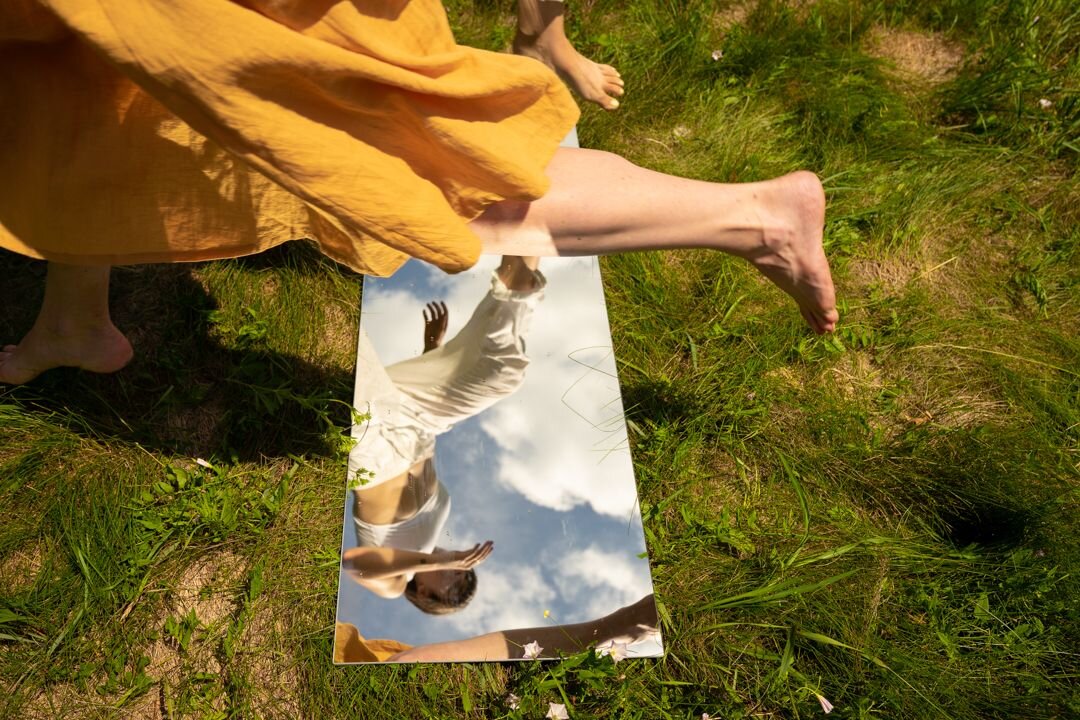Nervous System Regulation and Exploration
I’ve always known that the nervous system - a complex interconnected network of nerves and specialized cells providing a neural highway of information for our human functionality - and nervous system regulation are a big piece of the puzzle to overall wellness. Within the framework of Pilates, I mostly focus on the movements and know that by breathing deeply and moving slowly the nervous system will be accessed and positively affected.
Spring 2020 brought on the adaptation to teaching a majority of classes and clients online. This made it extremely hard to incorporate the energetic part of teaching people when you share physical space. That is, feeling someone’s energy and reading their body language which gives me a sense of how they’re responding to life and stimulus. This allows me to respond to my intuitions and affect change in the body. Another current reality is that we are collectively going through a time of heightened stress and discomfort as a society. And so, with or without this deeply intuitive measure, I started to theme my sessions and classes around the nervous system, particularly tapping into the parasympathetic system.
Since deep diving into this book Accessing the Healing Power of the Vagus Nerve by Stanley Rosenberg, coupled with the knowledge I’ve gained in practice to date, I started to understand (and personally feel) the full benefit of exploring movements to support better regulation of the nervous system. Below I share a few techniques that we’ve been exploring here at FT to support this.
Moving the Eyes
Looking around your space while exercising and allowing the eyes to focus for a few seconds on a new spot helps the functioning of the vagus nerve, sending messages to the brain that you’re safe and know your surroundings. This seems to work particularly well when the space is familiar, like your home, where a sense of safety and comfort already exists. Within the framework of Pilates and movement, I’ve found this technique most effective when the movement is familiar and we don’t need to focus on the mechanics of the movement -- think bridge, hip sways, cat/cow, or even ab curl.
Noticing Physical Cues from your NS
I cue people to picture the space between the sit bones as staying wide in every position. Often when we are in that fight or flight mode and the sympathetic nervous system takes over, our bodies tense up in an effort to protect our vulnerability, particularly through the pelvic floor and/or around the jaw. Noticing when those physical reactions happen and actively trying to soften these areas can help deescalate the sympathetic nervous system when it’s not needed.
Playfulness
Giving people permission to be playful with their movements or offering a childlike visual can help someone to enjoy movement more. In turn, we generally move with more ease and exercise has the potential to be more effective. For example, James Crader uses a cue: picture the hands as paper airplanes gliding through the air as you move the arms. I’ve personally had success cueing with imagery of the spine scribbling on the ceiling when getting people to wiggle in a quadruped position.
Perceiving Breath
Just hearing the breath enter and leave our body is a reassuring and audible cue that can calm us down. When we apply this to a movement practice using the floor, a prop like a squishy ball, or a wall to breathe into, it can be the tactile feedback we need to feel that we’re breathing. Alive and safe.
Like most things, attention and attunement to the nervous system take practice. When I started implementing some of these techniques into my regular Pilates workouts I felt distracted and sometimes bored, much like my early experiences with meditation. Over time, I started to feel more focused and experienced prolonged periods of relaxation or groundedness, and I was better able to respond to everyday situations rather than react. My once tonic, tight muscles (pelvic floor, jaw, and hip flexors) started to soften and I could feel bigger, more global muscles functioning better in my practice. This is something I can feel in my body because I have come to know the physical cues of a heightened sympathetic nervous system well. The Pilates practice supports this wholeheartedly and we can guide you into your own knowing based on your unique needs and experiences.
The takeaway: OUR NERVOUS SYSTEM IS QUEEN; getting to know her well can serve us in all facets of life.


